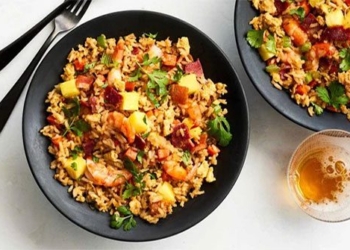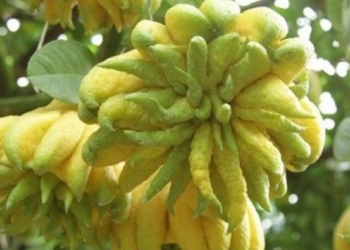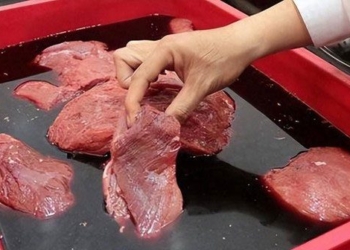Vietnam is famous for its delicious and visually appealing seafood. Recently, a type of snail the size of a button has been shared widely online due to its popularity: the ruốc snail.
People are drawn to the ruốc snail not only for its surprisingly delicious flavor but also for its beautiful colors. Moreover, the popularity of this snail stems from the “challenge” of eating it. Due to its small size and difficulty to handle, the process of eating ruốc snails becomes more interesting and challenging.
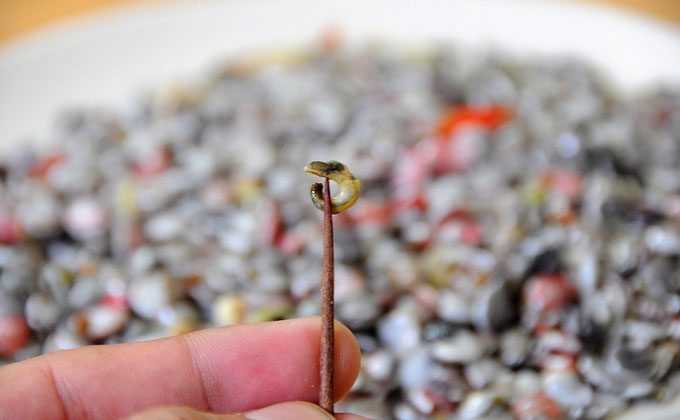
The tiny inside of a ruốc snail.
Recently, a viral video on social media featured four young men competing to see who could extract the most ruốc snail meat. All four strong men sat next to a “mountain of snails,” diligently and patiently picking the insides of each tiny snail.
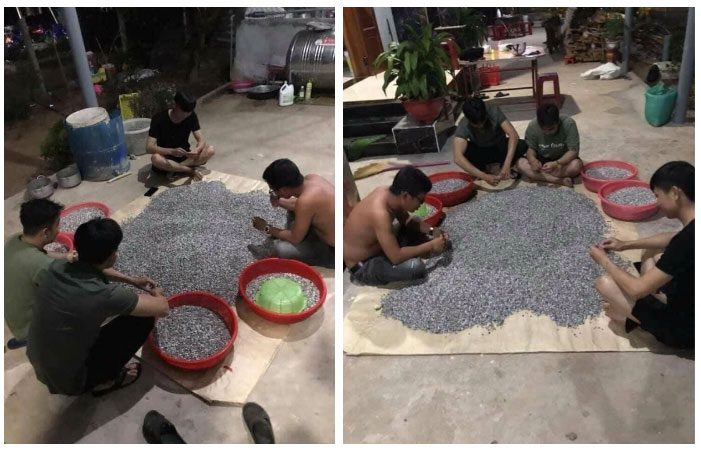
Four strong men patiently extracting ruốc snails.
Though the amount of meat is minimal, its unique taste and sweet ocean flavor, combined with its unusual appearance, have drawn increasing attention. However, few are aware that this type of snail has been warned by the Food Safety Department (Ministry of Health) as potentially causing food poisoning.
Many Cases of Food Poisoning and Diarrhea from Eating Ruốc Snails
In 2008, the Thang Binh district general hospital in Quang Nam recorded hundreds of cases of food poisoning due to consuming ruốc snails. On one peak day, the hospital admitted up to 47 cases of poisoning from eating ruốc snails, not to mention many cases self-treating at home or visiting local health stations for IV fluids.
In early 2014, in Phu Ninh district, Quang Nam province, 14 cases of food poisoning were reported due to eating jellyfish and ruốc snails. Most patients admitted to the hospital were in a severely weakened state, dehydrated, vomiting frequently, and suffering from diarrhea, leading to dizziness and fever.
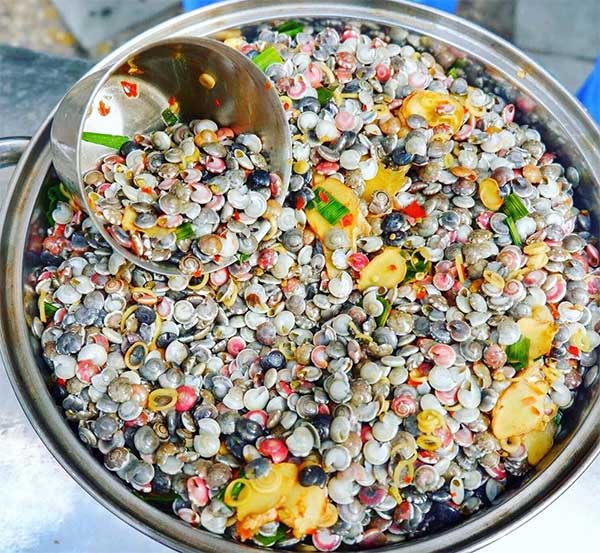
Boiled ruốc snails have recently become a popular market item.
According to Associate Professor Dr. Nguyen Duy Thinh (Institute of Biotechnology & Food Technology, Hanoi University of Science and Technology): Ruốc snails, also known as chép snails, are a type of snail typically found in estuaries, small in size and vibrantly colored.
“These snails are not suitable for consumption. They often live in muddy bottoms, thus containing many impurities. If they inhabit polluted waters, the likelihood of containing toxins increases. Furthermore, the microorganisms that coexist on the shells of ruốc snails can also be a source of toxicity. Additionally, the small size of ruốc snails makes it very challenging to wash away the mud and sand inside them. It is best advised that people do not consume them,” said Associate Professor Dr. Nguyen Duy Thinh.
To ensure community health, the Food Safety Department (Ministry of Health) has advised the public against using ruốc snails as food for children to prevent diarrhea. Before consuming ruốc snails, it is necessary to soak them in clean water multiple times and remove all impurities.
How to Safely Consume Snails to Ensure Health?
Associate Professor Dr. Nguyen Duy Thinh recommends choosing familiar types of snails with larger sizes to easily remove impurities. For example: hương snails, mỡ snails, mít snails… Do not consume snails with unusual appearances as they may cause poisoning. Additionally, experts warn everyone to avoid consuming frozen snails. If snails are frozen under inadequate storage conditions, they may lose nutrients, and even their composition can alter, posing harm to the body if consumed.
For safe snail consumption, everyone should remember: After purchasing snails, soak them in rice water, vinegar, salt water mixed with lemon or chili to help the snails expel impurities and avoid poisoning. Then boil them thoroughly before eating. If you eat snails that are not fully cooked, you are at risk of parasitic infections and have a high chance of suffering from digestive diseases, stomach aches, and nausea…








































